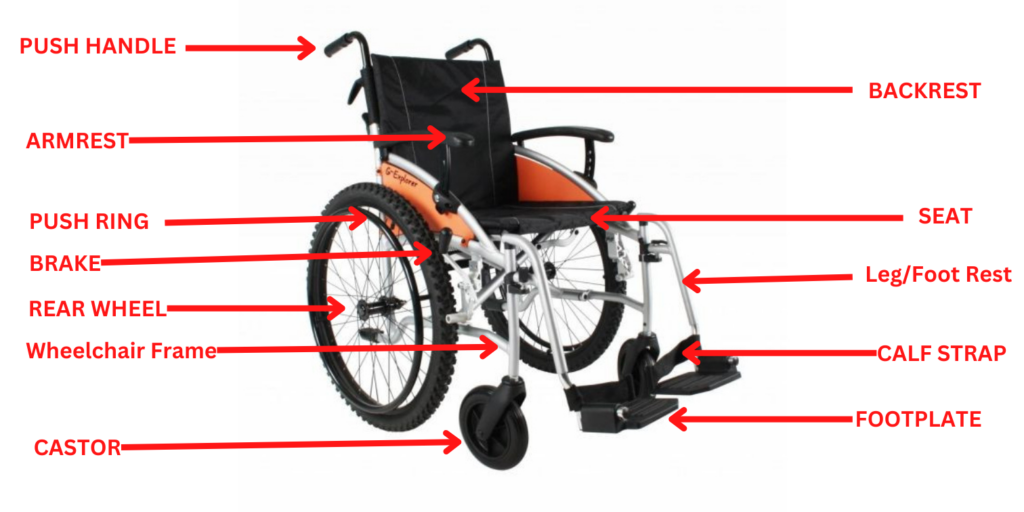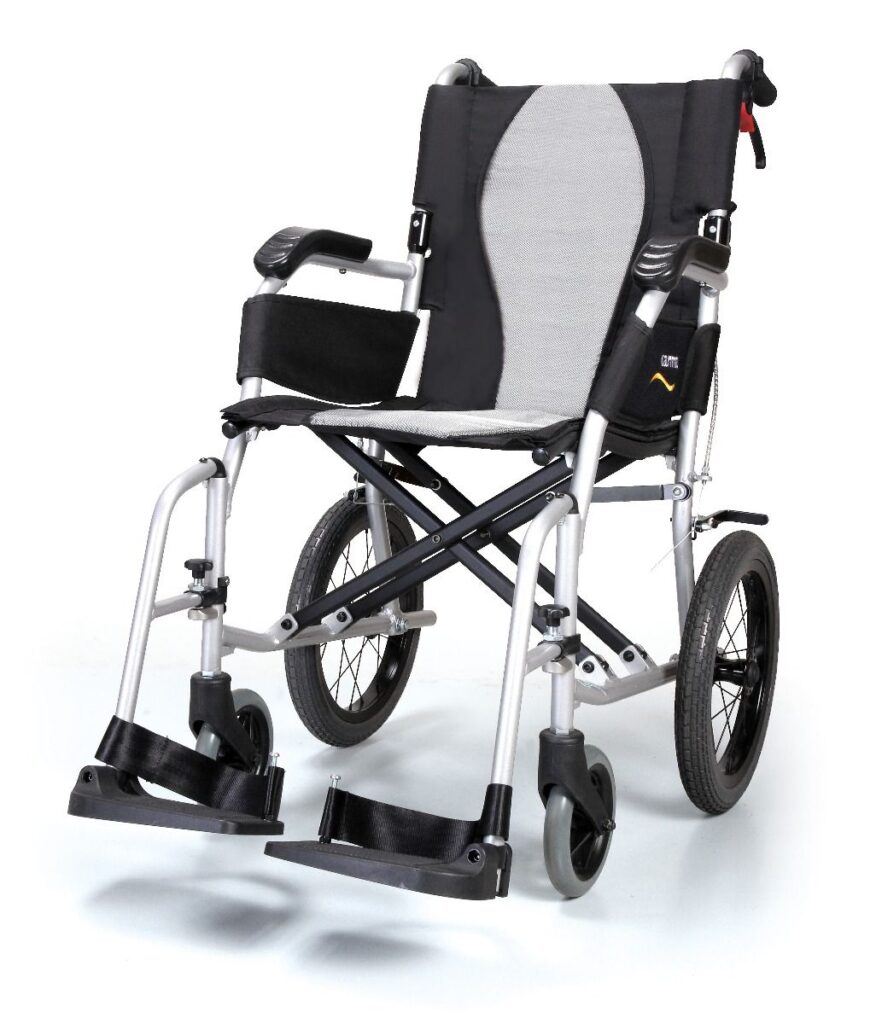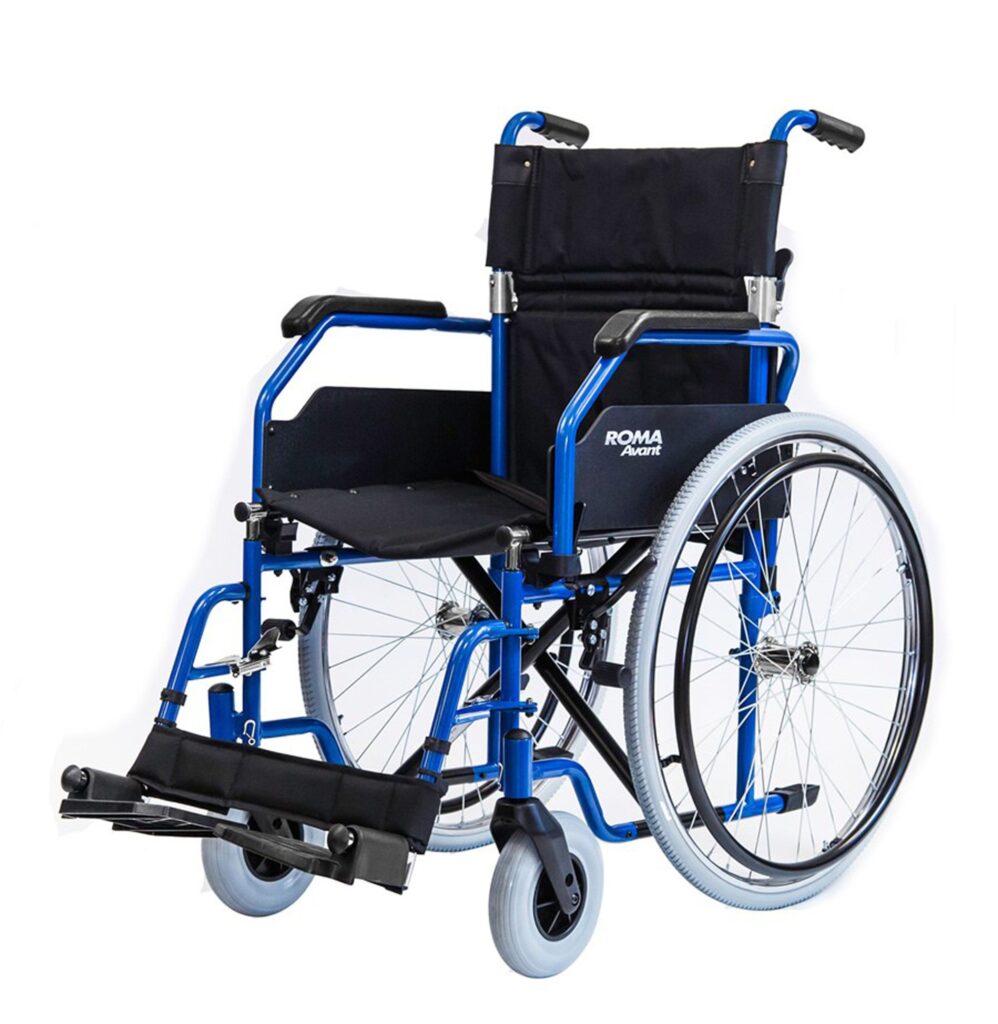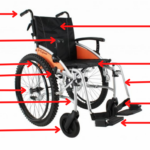
1. Why Choosing the Right Wheelchair Matters?
Choosing the right wheelchair is a big deal and can make a huge difference in your life. Whether you want independence, support for daily living or more comfort, a well chosen wheelchair means easy movement and confidence.
With so many options out there it can be overwhelming. Where you’ll use it, how often and your physical needs all come into play. Choosing the wrong wheelchair and you’ll be uncomfortable, limited in mobility and even health problems down the line.
So here’s our Wheelchair Buying Guide coming into play. This will help you navigate the process and everything you need to know from understanding your needs to comparing types, features and accessories. We want to help you make an informed decision with ease.
In this guide
- How to choose the right wheelchair for you.
- Wheelchair types and what they have.
- Sizing, comfort and usability tips.
- Funding, accessories and maintenance.
Whether you need a travel wheelchair, a bariatric wheelchair for heavy use or a powered wheelchair for extra convenience we have you covered. If you want to listen to this article, check the guide here:-
Table of Contents
2. Your Needs
Questions to Ask to ask yourself
1. Where Will You Use Your Wheelchair?
- Indoors: If you’ll be using your wheelchair indoors most of the time, look for a compact frame and smooth tyres for easy navigation through tight spaces.
- Outdoors: For outdoor use, a robust design with larger, durable tyres is best for rough terrain.
- Both: If you need versatility, look for hybrid options that are lightweight and rugged.
2. How Often Will You Use It?
- Occasional Use: Lightweight, foldable options are good for short trips or occasional use.
- Full-Time Use: Look for a wheelchair with extra comfort features like padded seats, adjustable backrests and pressure-relief cushions.
3. Will You Propel the Wheelchair Yourself?
- Self-Propelled: Larger rear wheels for users to propel themselves, more independence.
- Carer-Assisted (Transit): For those who need assistance, lightweight and easy for carers to push.
4. Do You Need a Folding or Compact Design?
If storage or transport is an issue, choose a foldable wheelchair or one with quick-release components.
5. How Much is your Budget?
Wheelchairs range from basic to powered. Set a budget and check out funding options like NHS or VAT relief if you’re eligible.
Why This Matters
Taking the time to assess your needs means you’ll choose a wheelchair that fits your lifestyle and long term comfort and usability. Each factor matters – from your surroundings to use frequency – can impact how well your wheelchair supports you in daily life.
Types of Wheelchairs
Wheelchairs come in many styles, each designed for specific needs. Knowing the types will help you choose the right one for your lifestyle and mobility requirements.
Manual Wheelchairs
Manual wheelchairs are self propelled or carer propelled. Good for those who can use their upper body or have someone to help them.
- Self-Propelled Wheelchairs: Large rear wheels with push rims, users can move independently. Handles for carers to assist when needed. Good for active users who want independence.
- Transit Wheelchairs (Carer-Assisted): Smaller rear wheels, pushed by a carer. Light and compact, good for travel and short term use.
Electric (Powered) Wheelchairs
Electric wheelchairs are battery powered and joystick controlled. Great for users with limited upper body strength or those who need to travel longer distances without using energy. Many are foldable for easy storage and transport.
When to consider an electric wheelchair:
- If you can't propel a manual chair yourself.
- If you need a wheelchair for longer distances.
- If you have limited upper body strength or mobility.
Lightweight and Ultra-Lightweight Wheelchairs
Lightweight wheelchairs are easy to carry, fold and store. Aluminium frames and perfect for travel. For users who need a super portable option without compromising on durability.
Heavy-Duty (Bariatric) Wheelchairs
Heavy-duty wheelchairs are built with reinforced frames for users with higher weight requirements. Despite being heavy duty many bariatric wheelchairs are available in self-propelled and transit options.
Narrow and Compact Wheelchairs
Narrow wheelchairs are for smaller users or those who need to navigate through tight spaces like narrow hallways or doorways. Slim frames for indoor use and busy environments.
Which one is for you?
You? 😉
What? 😊 (Sorry, had to!) Seriously though, your mobility needs, lifestyle and personal preferences. Do you self propel, is portability key or do you need extra support features for comfort?
Factors to Consider Before Buying a Wheelchair
When considering a wheelchair, there are several key factors to keep in mind that will guide your choice. First, think about your mobility needs: will this wheelchair be for full-time use or just on occasion? Will it primarily be used indoors or outdoors? Do you need one that can handle uneven surfaces or steep grades? Answering these questions will help you pinpoint the right type of wheelchair for your situation. It's also important to factor in your body size and weight capacity since wheelchairs come in diverse sizes and weight limits. Making sure the wheelchair fits your body type is essential for comfort. Furthermore, think about the level of comfort and support you require. Some wheelchairs offer adjustable seating options, including backrests, armrests, and footrests, which can significantly enhance your comfort. Finally, don't forget to take into account your budget and any insurance coverage you may have. Wheelchair prices can vary greatly, so it's important to set a realistic budget and explore insurance options if applicable.
If you are looking for a wheelchair, there are several features to consider:
Comfort
The first thing to look at is whether the chair has features that make it easier for you to get around. These may include hand controls, footrests, or levers. If you have trouble getting around, then you should consider purchasing a chair that has these features. You want to make sure that you can easily move around without having to struggle.
Chair Size
you need to think about how big the chair is. A bigger chair means that you can sit farther back and still feel comfortable. However, if you are short, then you might find yourself feeling cramped. Make sure that you choose a chair that fits well and feels right.
Seat Height
You also need to think about the height of the seat. Do you prefer a higher or lower seat? Higher seats mean that you can reach things further away, while lower seats mean that you can rest your feet on the ground.
Armrests
Armrests are great for resting your arms. They help keep your hands free and give you something to hold onto. Armrests are especially helpful if you are using a manual wheelchair.
Wheels
Wheels are great for moving around. They allow you to go anywhere you want to go. You don't have to worry about bumping into anything or falling over.
Brakes
Brakes are great for stopping. They let you stop wherever you want to stop. Brakes are especially useful if you are going downstairs or on ramps.
Hand Controls
Hand controls are great for controlling the chair. They let you control the speed and direction of the chair. Hand controls are especially helpful if you have arthritis or other conditions that affect your hands.
How do I know what size wheelchair to get?
Getting the right size wheelchair is crucial for both comfort and functionality. To determine the correct size, you'll need to take accurate measurements. Start by measuring the width of your hips, as this will determine the seat width. Measure from one hip to the other while seated, and add a couple of inches to allow for some extra room. Next, measure the length of your lower leg from the back of your knee to the sole of your foot. This will help determine the seat depth. It's important to ensure that your feet can comfortably rest on the footrests without feeling cramped. Additionally, measure the height from the seat to the top of your head to determine the seat height. This measurement is crucial, as it will allow you to manoeuvre your wheelchair easily and comfortably under tables or desks. Finally, consider the overall weight and dimensions of the wheelchair, particularly if you plan to transport it frequently. Taking accurate measurements will ensure that you find a wheelchair that fits you perfectly and provides optimal support and mobility.
Picking the right wheelchair size is mostly about how wide you need the seat to be. The seat size affects how the wheelchair looks and what other features it has. Usually, seats are between 16 to 20 inches wide, and most are around 18 inches wide.
Understanding Wheelchair Features and Options
Wheelchairs come with a wide range of features and options designed to meet the diverse needs of users. Understanding these features will help you make an informed decision and choose a wheelchair that aligns with your specific requirements. Some common features to consider include:
1. Frame Material: Wheelchair frames are typically made of steel, aluminium, or titanium. Steel frames are sturdy but heavy, while aluminium frames are lightweight and more portable. Titanium frames offer the best of both worlds - lightness and durability - but come at a higher cost.
2. Wheel Type: The type of wheels on a wheelchair can significantly impact manoeuvrability. Standard wheelchairs come with solid rubber tyres, which are durable but provide a rougher ride. Pneumatic or air-filled tyres offer a smoother ride but require more maintenance. Additionally, some wheelchairs feature larger rear wheels for increased stability and better outdoor performance.
3. Brakes: Wheelchair brakes are essential for safety and control. Most wheelchairs come with manual brakes that can be operated by the user or a caregiver. Some electric wheelchairs have automatic brakes that engage when the joystick is released. Consider your needs and abilities when choosing the type of brakes that work best for you.
4. Seating Options: Wheelchair seating options include different types of cushions, backrests, and armrests. These features can significantly impact your comfort and posture. Cushions come in various materials, such as foam or gel, and can provide pressure relief for individuals who spend long hours in a wheelchair. Adjustable backrests and armrests allow for personalized support and comfort.
5. Footrests: Footrests are an essential component of a wheelchair, providing support and stability for the legs. Some wheelchairs offer swing-away or detachable footrests, allowing for easier transfers in and out of the chair. Others feature elevating leg rests, which are beneficial for individuals with leg or foot injuries.

Wheelchair Accessories and Customization
To enhance your comfort and mobility, there are a variety of accessories and customization options available for wheelchairs. Accessories can range from simple additions like cup holders or storage pouches to more advanced features like power-assisted wheels or seat elevators. Consider your specific needs and preferences when choosing accessories. For example, if you spend a lot of time outdoors, you may benefit from a weather-resistant cover or off-road tyres. If you use a wheelchair for work or school, a laptop tray or book holder could be useful. Additionally, you can personalize your wheelchair with colour choices or custom upholstery. Remember that accessories and customization can add to the overall cost of your wheelchair, so it's important to budget accordingly.
Where to Buy Wheelchairs - Online vs. Brick-and-Mortar Stores
When it comes to purchasing a wheelchair, you have the option to buy from online retailers or brick-and-mortar stores. Both options have their pros and cons. Online retailers often offer a wider selection of wheelchairs, and you can conveniently compare prices and features from the comfort of your home. However, it's essential to do thorough research and read customer reviews to ensure the reliability and quality of the product. Brick-and-mortar stores, such as medical supply stores or mobility equipment providers, allow you to try out different wheelchairs and receive personalized assistance from trained professionals. This can be particularly beneficial if you're unsure about the specific features or sizing of the wheelchair. Additionally, in-person stores may offer repair and maintenance services. Whichever option you choose, make sure to consider factors like warranty, return policy, and after-sales support.
Wheelchair Pricing and Insurance Coverage
Wheelchair prices can vary widely depending on the type, features, and brand. Manual wheelchairs generally range from a hundred to a few thousand pounds, while electric wheelchairs can cost several thousand pounds or more. It's essential to set a realistic budget and explore your insurance coverage options. Insurance plans, such as Medicare or private health insurance, may provide coverage for wheelchairs under certain conditions. However, coverage eligibility and reimbursement processes can be complex, so it's advisable to consult with your insurance provider directly to understand the specifics. Keep in mind that even if insurance covers a portion of the cost, you may still be responsible for deductibles or co-pays. If you're purchasing a wheelchair without insurance coverage, consider exploring financing options or second-hand wheelchairs to find a more affordable solution.
Wheelchair Maintenance and Repairs
Proper maintenance and regular upkeep are essential to ensure the longevity and functionality of your wheelchair. Some basic maintenance tasks include regularly cleaning the wheelchair frame and upholstery, checking the tyre pressure, and lubricating moving parts. It's also important to inspect the brakes and any electrical components on electric wheelchairs. Additionally, you may need to periodically replace worn-out parts, such as tyres or cushions, to maintain optimal performance. If you're not comfortable performing maintenance tasks yourself, you can seek assistance from a professional wheelchair repair service or your local mobility equipment provider. Remember, regular maintenance can help prevent costly repairs in the long run and keep your wheelchair in top condition.
Tips for Choosing the Right Wheelchair for Your Needs
Choosing the right wheelchair can significantly impact your comfort, mobility, and overall quality of life. Here are some tips to help you make an informed decision:
1. Consult with a Healthcare Professional: If you're unsure about your specific needs or have medical considerations, it's advisable to consult with a healthcare professional, such as an occupational therapist or physical therapist. They can provide valuable insight and recommendations based on your unique circumstances.
2. Test Drive: If possible, try out different wheelchairs before making a final decision. This will allow you to assess the comfort, manoeuvrability, and ease of use of each wheelchair. Pay attention to factors such as seat width, cushioning, and ease of propulsion.
3. Consider Future Needs: It's important to think about your future needs when choosing a wheelchair. Will your mobility requirements change over time? Are you likely to need additional accessories or features in the future? Choosing a wheelchair that can accommodate potential changes can save you from having to upgrade too soon.
4. Read Reviews: Before purchasing a wheelchair, read customer reviews and testimonials to get an idea of the experiences of other users. Pay attention to factors like durability, customer support, and overall satisfaction.
5. Warranty and After-Sales Support: Check the warranty and after-sales support offered by the manufacturer or retailer. A comprehensive warranty and reliable customer support can give you peace of mind knowing that you'll receive assistance if any issues arise.
Remember, choosing a wheelchair is a personal decision, and what works for one person may not work for another. Take the time to research, explore your options, and prioritize your specific needs and preferences.

Conclusion
Finding the perfect wheelchair that meets your needs and enhances your independence is an important decision. By understanding the different types of wheelchairs, considering your specific needs, and exploring the available features and accessories, you can make an informed choice. Remember to take accurate measurements, explore your customization options, and consider your budget and insurance coverage. Whether you choose a manual or electric wheelchair, the right wheelchair will empower you to navigate the world with confidence and comfort. We hope this ultimate wheelchair buying guide has equipped you with the knowledge and guidance you need to embark on your journey to finding the perfect wheelchair that will enhance your independence and improve your quality of life.
Would you like to purchase a wheelchair?
I hope this guide will answer most of your questions about wheelchair buying. If you have any more questions you can call one of our mobility experts at 0800 0855 595 or visit our Mobility Shop website for product-related details.
Frequently Asked Questions (FAQs)
What is a Wheelchair?
A wheelchair is a chair with wheels used by individuals who face difficulties in walking due to various reasons such as illness, injuries, the challenges of aging, or disabilities. They provide extensive support to the body and are built for comfort, benefiting many people.
Do I need a prescription for a wheelchair?
You don’t need a doctor’s note to purchase or use a wheelchair. However, if you want your insurance to assist with the cost, you will need a prescription from a doctor. Once a doctor verifies your need for a wheelchair, you can obtain insurance coverage with their prescription.
How long do wheelchairs last?
Typically, a wheelchair has a lifespan of about 2 to 3 years, while manual models can last up to 5 years. Increased usage can lead to quicker wear and tear.
As your mobility needs may change over time, you might find yourself needing an upgrade before the wheelchair is completely worn out. When purchasing, consider how frequently you will use it—will it be for occasional use or daily activities? This will help you choose the right wheelchair and make the most of its durability.
Do I need a Wheelchair?
If you have trouble walking without help and get tired after just a few steps, a wheelchair could be helpful for you. Even if you can walk with some assistance, like from a friend, family member, or a cane, but find it hard to cover long distances, a wheelchair might still be beneficial.
If you think a wheelchair could improve your ability to move around, it's essential to talk to your therapist, GP or our mobility experts about your mobility challenges. During this process, they will assess your needs and might recommend a wheelchair if it's suitable for you.
Sometimes, It can be hard to decide when they even need a wheelchair. If you are unable to walk and always require full-body support should use one. There can be many reasons:
- Injuries or broken bones to the legs or feet.
- Having trouble while walking or being unable to walk
- Any neurological issues
- any significant balance or gait problems
- Having paralysis or musculoskeletal issues
- feeling tired easily or cannot walk long distances.
- Getting pain while walking.
There are many things you should consider as per your situation and take advice from your GP or therapist or one of our experts via chat, email, or call, whichever is easier.

